[Editor’s Note: The Operational Environment (OE) is the start point for Army Readiness – now and in the Future. The OE answers the question, “What is the Army ready for?” Without the OE in training and Leader development, Soldiers and Leaders are “practicing” in a benign condition, without the requisite rigor to forge those things essential for winning in a complex, multi-domain battlefield. Building the Army’s future capabilities, a critical component of future readiness, requires this same start point. The assumptions the Army makes about the Future OE are the sine qua non start point for developing battlefield systems — these assumptions must be at the forefront of decision-making for all future investments.]
 There are no facts about the future. Leaders interested in building future ready organizations must develop assumptions about possible futures and these assumptions require constant scrutiny. Leaders must also make decisions based on these assumptions to posture organizations to take advantage of opportunities and to mitigate risks. Making these decisions is fundamental to building future readiness.
There are no facts about the future. Leaders interested in building future ready organizations must develop assumptions about possible futures and these assumptions require constant scrutiny. Leaders must also make decisions based on these assumptions to posture organizations to take advantage of opportunities and to mitigate risks. Making these decisions is fundamental to building future readiness.
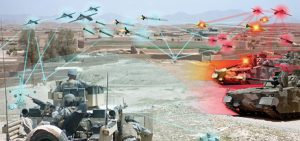
The TRADOC G-2 has made the following foundational assumptions about the future that can serve as launch points for important questions about capability requirements and capabilities under development. These assumptions are further described in An Advanced Engagement Battlespace: Tactical, Operational and Strategic Implications for the Future Operational Environment, published by our colleagues at Small Wars Journal.
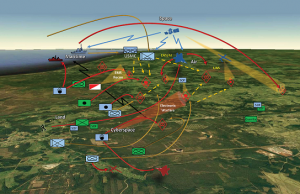 1. Contested in all domains (air, land, sea, space, and cyber). Increased lethality, by virtue of ubiquitous sensors, proliferated precision, high kinetic energy weapons and advanced area munitions, further enabled by autonomy, robotics, and Artificial Intelligence (AI) with an increasing potential for overmatch. Adversaries will restrict us to temporary windows of advantage with periods of physical and electronic isolation.
1. Contested in all domains (air, land, sea, space, and cyber). Increased lethality, by virtue of ubiquitous sensors, proliferated precision, high kinetic energy weapons and advanced area munitions, further enabled by autonomy, robotics, and Artificial Intelligence (AI) with an increasing potential for overmatch. Adversaries will restrict us to temporary windows of advantage with periods of physical and electronic isolation.
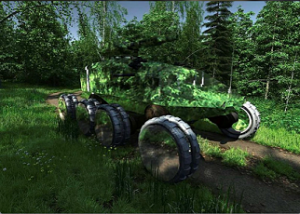
2. Concealment is difficult on the future battlefield. Hiding from advanced sensors — where practicable — will require dramatic reduction of heat, electromagnetic, and optical signatures. Traditional hider techniques such as camouflage, deception, and concealment will have to extend to “cross-domain obscuration” in the cyber domain and the electromagnetic spectrum. Canny competitors will monitor their own emissions in real-time to understand and mitigate their vulnerabilities in the “battle of signatures.” Alternately, “hiding in the open” within complex terrain clutter and near-constant relocation might be feasible, provided such relocation could outpace future recon / strike targeting cycles. Adversaries will operate among populations in complex terrain, including dense urban areas.
 3. Trans-regional, gray zone, and hybrid strategies with both regular and irregular forces, criminal elements, and terrorists attacking our weaknesses and mitigating our advantages. The ensuing spectrum of competition will range from peaceful, legal activities through violent, mass upheavals and civil wars to traditional state-on-state, unlimited warfare.
3. Trans-regional, gray zone, and hybrid strategies with both regular and irregular forces, criminal elements, and terrorists attacking our weaknesses and mitigating our advantages. The ensuing spectrum of competition will range from peaceful, legal activities through violent, mass upheavals and civil wars to traditional state-on-state, unlimited warfare.
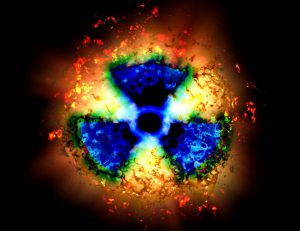
4. Adversaries include states, non-state actors, and super-empowered individuals, with non-state actors and super empowered individuals now having access to Weapons of Mass Effect (WME), cyber, space, and Nuclear/Biological/ Chemical (NBC) capabilities. Their operational reach will range from tactical to global, and the application of their impact from one domain into another will be routine. These advanced engagements will also be interactive across the multiple dimensions of conflict, not only across every domain in the physical dimension, but also the cognitive dimension of information operations, and even the moral dimension of belief and values.
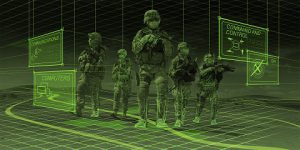
5. Increased speed of human interaction, events and action with democratized and rapidly proliferating capabilities means constant co-evolution between competitors. Recon / Strike effectiveness is a function of its sensors, shooters, their connections, and the targeting process driving decisions. Therefore, in a contest between peer competitors with comparable capabilities, advantage will fall to the one that is better integrated and makes better and faster decisions.
These assumptions become useful when they translate to potential decision criteria for Leaders to rely on when evaluating systems being developed for the future battlefield. Each of the following questions are fundamental to ensuring the Army is prepared to operate in the future.
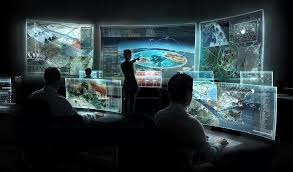
1. How will this system operate when disconnected from a network? Units will be disconnected from their networks on future battlefields. Capabilities that require constant timing and precision geo-locational data will be prioritized for disruption by adversaries with capable EW systems.
 2. What signature does this system present to an adversary? It is difficult to hide on the future battlefield and temporary windows of advantage will require formations to reduce their battlefield signatures. Capabilities that require constant multi-directional broadcast and units with large mission command centers will quickly be targeted and neutralized.
2. What signature does this system present to an adversary? It is difficult to hide on the future battlefield and temporary windows of advantage will require formations to reduce their battlefield signatures. Capabilities that require constant multi-directional broadcast and units with large mission command centers will quickly be targeted and neutralized.
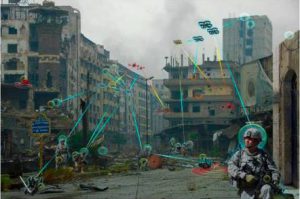
3. How does this system operate in dense urban areas? The physical terrain in dense urban areas and megacities creates concrete canyons isolating units electronically and physically. Automated capabilities operating in dense population areas might also increase the rate of false signatures, confusing, rather than improving, Commander decision-making. New capabilities must be able to operate disconnected in this terrain. Weapons systems must be able to slew and elevate rapidly to engage vertical targets. Automated systems and sensors will require significant training sets to reduce the rate of false signatures.
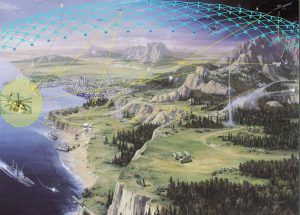
4. How does this system take advantage of open and modular architectures? The rapid rate of technological innovations will offer great opportunities to militaries capable of rapidly integrating prototypes into formations. Capabilities developed with open and modular architectures can be upgraded with autonomous and AI enablers as they mature. Early investment in closed-system capabilities will freeze Armies in a period of rapid co-evolution and lead to overmatch.
 5. How does this capability help win in competition short of conflict with a near peer competitor? Near peer competitors will seek to achieve limited objectives short of direct conflict with the U.S. Army. Capabilities will need to be effective at operating in the gray zone as well as serving as deterrence. They will need to be capable of strategic employment from CONUS-based installations.
5. How does this capability help win in competition short of conflict with a near peer competitor? Near peer competitors will seek to achieve limited objectives short of direct conflict with the U.S. Army. Capabilities will need to be effective at operating in the gray zone as well as serving as deterrence. They will need to be capable of strategic employment from CONUS-based installations.
If you enjoyed this post, check out the following items of interest:
-
- Join SciTech Futures‘ community of experts, analysts, and creatives on 11-18 June 2018 as they discuss the logistical challenges of urban campaigns, both today and on into 2035. What disruptive technologies and doctrines will blue (and red) forces have available in 2035? Are unconventional forces the future of urban combat? Their next ideation exercise goes live 11 June 2018 — click here to learn more!
-
- Watch the U.S. Army Natick Soldier RD&E Center‘s The Soldier of the Future Concept video (the source of the featured image at the top of today’s post).
-
- View the TRADOC G-2 Operational Environment Enterprise’s The Changing Character of Future Warfare video.



